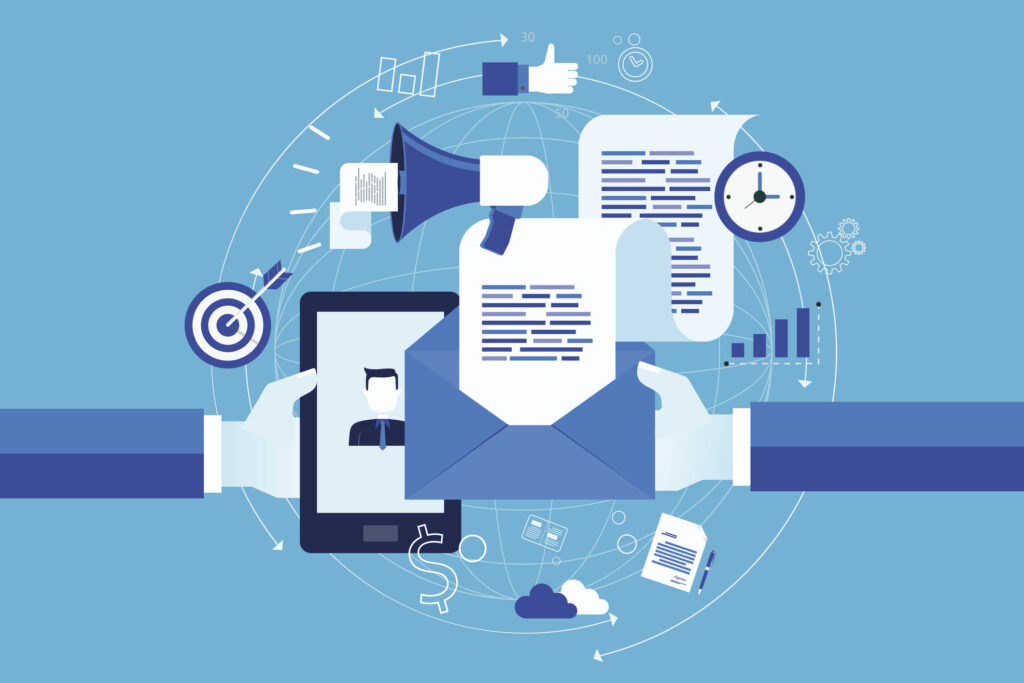If your job includes marketing, you know that the “digital marketing” umbrella includes a head-spinning array of tools, tactics and technologies. Social media, infographics, video, content marketing, text alerts — you could spend your entire work week chasing down new ideas.
While I love experimenting with new marketing tools, there’s one trusty stand-by I always return to as a content marketing consultant at Rep Cap: email marketing. If you’re not using email to connect with customers, you might be missing a big opportunity to grow your business. Here are three lessons I’ve learned about building a successful email newsletter.
Think Like Your Customer
While it’s tempting to use email to blast out your latest product, promotion or news, that’s not necessarily what your customers are looking for. Instead of thinking about “we” and “us,” think about “you” — your customer. Focus on their needs, not your news.
You’ve probably spent a good amount of time learning about your target customer. Who are you selling to? What are they looking for, and why do they need your help? What could you do to make your customers’ lives easier? The answers to these questions should guide your email strategy.
A good rule of thumb is 70/30: 70 percent helpful content that your customers are looking for, 30 percent marketing content that’s more about you. If you can limit the self-promotion to 30 percent, your customers are likely to listen to what you have to say — instead of screening out your emails as noise.
Get Creative
What does your email inbox look like? If it’s anything like mine, it’s crowded. While email is still one of the most effective ways to reach customers, your email has to stand out.
Here’s the secret of good email marketing: Don’t be boring. Most marketing emails are pretty snooze-worthy — and a lot of them look pretty similar. Your email newsletter is your chance to set yourself apart and show off what’s unique about your business.
Here are a few ways to make your emails more unique (and get people to open them!):
- Try a funny subject line. Even serious businesses can be funny!
- Create an email design that’s colorful, creative or fun.
- Test a wacky promotion or use an unexpected image.
- Wow your customers with generosity — whether that means offering a big discount or just providing insanely helpful resources or free advice.
If you’re already using email newsletters, it’s never a bad time to shake things up. A new design or content strategy can boost your emails from boring to brag-worthy.
Look for Every Possible Chance to Grow Your List
When it comes to email marketing, I see a lot of marketers and business owners making the same mistake: They don’t think about growing their list. They set up their newsletter list, upload all of their customers and friends of the company, start sending emails and never look back at the list again.
But email lists aren’t static; they change over time. People unsubscribe, change email addresses and sometimes stop reading. “Churn” is the technical word for losing subscribers from an email list, and average email churn can be as high as 25 percent per year. That stat might sound scary, but it just means it’s important to actively look for new people to add to your list.
Think about all of the different ways you interact with customers and prospects. How could you turn every one of those interactions into a subscription opportunity? Who is in your business’ orbit but not on your email list?
Here are a few places to get new email subscribers:
- On your website. A good place to add a sign-up box is in the website footer. People who visit your website are probably looking a way to stay in touch with you; email is a low-commitment way for them to do that.
- On your social media profiles. If you have a business page on Facebook, you can choose a call to action for it. One choice is “Sign up,” where people can subscribe to your newsletter right from Facebook.
- At events. If you spend a lot of time at trade shows or other customer-facing events, turn those new connections into subscribers.
- New customers. Make sure you add new customers to your list. They already know and like you, so keep them in the loop.
- At your business. If you interact with customers in person every day, look for face-to-face ways to add them to your list. You could ask for their email address at checkout, put a sign-up link or contest on every receipt, or post an old-fashioned paper sign-up sheet.



